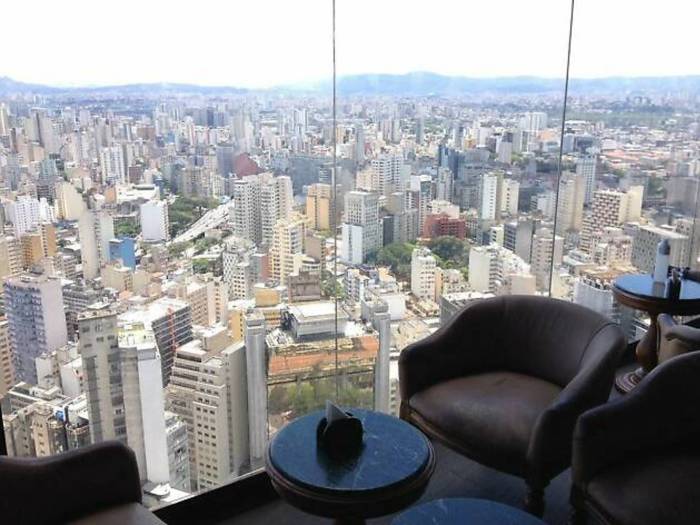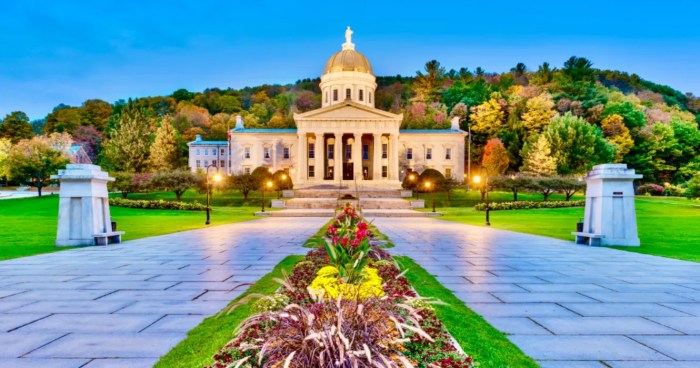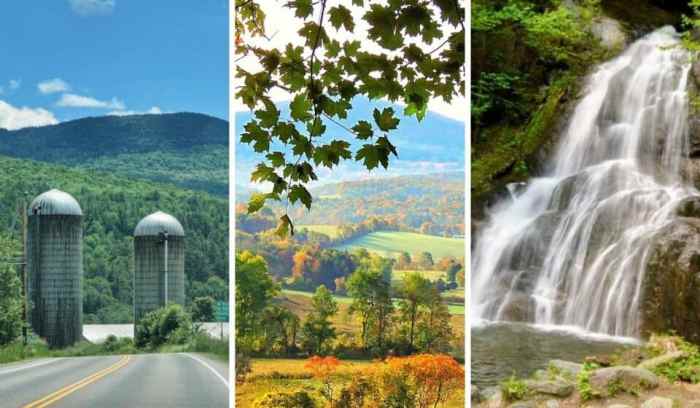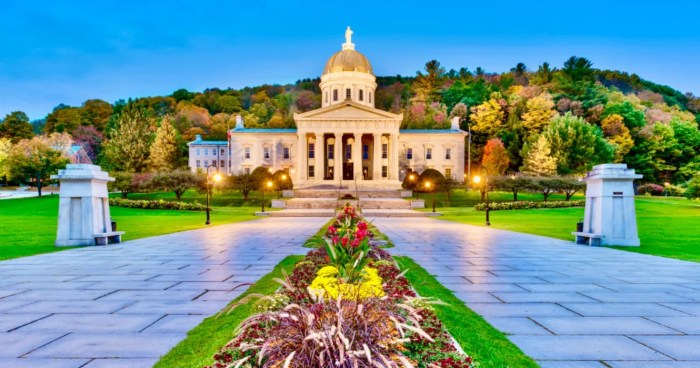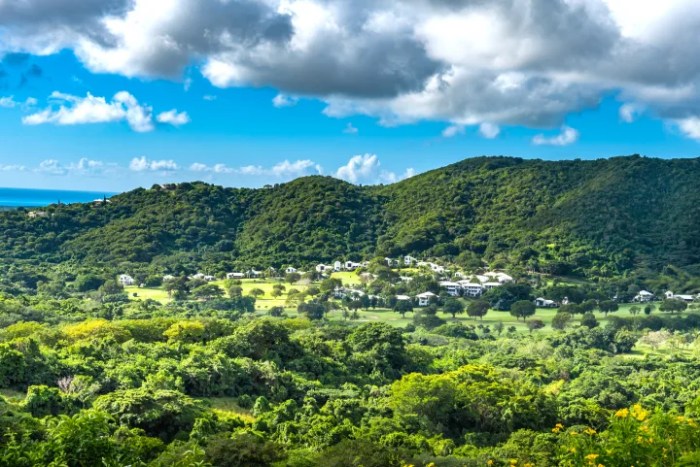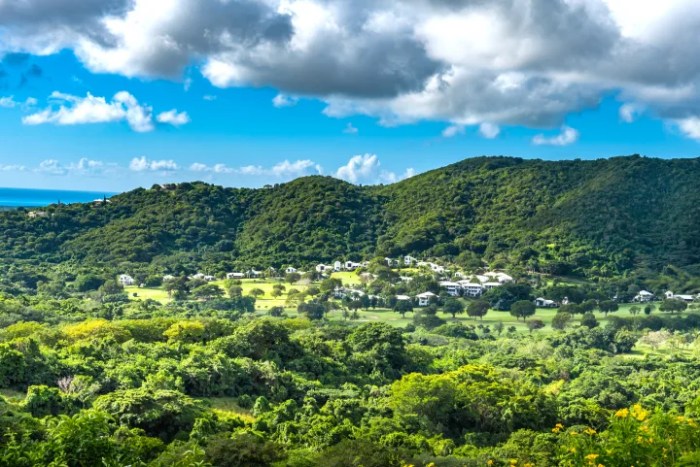Things to know before traveling to Kenya – from visa requirements to cultural etiquette, this guide provides a comprehensive overview of everything you need to know for a smooth and enjoyable trip. Get ready to explore the vibrant landscapes, wildlife, and rich culture of Kenya, but first, let’s cover the essential pre-trip information to ensure a memorable experience.
This detailed guide unpacks crucial aspects of planning your Kenyan adventure, including necessary documents, health precautions, and practical tips on transportation, accommodation, and local customs. We’ll delve into the specifics, offering clear insights into each element to help you navigate the planning process with confidence.
Visa Requirements and Regulations
Navigating visa requirements can be a crucial step in planning a trip to Kenya. Understanding the specific rules for your nationality, the application process, and potential variations across entry points is essential for a smooth journey. This section details the nuances of visa procedures, ensuring you’re well-prepared for your Kenyan adventure.Visa requirements for Kenya vary significantly depending on your nationality.
Some nationalities may be eligible for visa-free entry for tourism or business purposes, while others may require a visa obtained in advance. This often necessitates meticulous research to avoid delays at the border.
Visa Categories
Kenya offers various visa types catering to different purposes. Knowing the distinctions between these types is critical to choosing the appropriate visa for your trip.
- Tourist Visa: This is the most common visa type for travelers seeking to explore Kenya’s diverse landscapes and vibrant culture. It permits entry for a specified duration, usually ranging from a few weeks to several months, and is ideal for leisure activities, sightseeing, and cultural immersion.
- Business Visa: Specifically designed for individuals engaging in professional activities, this visa allows for participation in conferences, meetings, or business negotiations within Kenya.
- Transit Visa: If your journey involves a layover in Kenya, a transit visa is needed to ensure smooth passage through the country’s airports or borders. The duration of this visa is generally short and dependent on the duration of your transit.
- Work Visa: Required for individuals seeking employment opportunities in Kenya, this visa necessitates compliance with Kenyan labor laws and regulations.
Eligibility Criteria
Visa eligibility criteria are contingent on the type of visa sought and the applicant’s nationality. Each visa category has specific requirements, including a detailed review of your travel history, purpose of travel, and supporting documents.
- Passport Validity: Your passport must be valid for a period exceeding the duration of your intended stay in Kenya.
- Proof of Funds: Demonstrating sufficient financial resources to support your stay in Kenya is essential. This may include bank statements, letters of support, or sponsorship documents.
- Travel Insurance: Comprehensive travel insurance covering medical expenses, evacuation, and other contingencies is often required. This is a critical element to ensure your well-being during your stay.
- Purpose of Visit: A clear statement outlining the purpose of your visit is vital. This is often evidenced through a detailed itinerary, letter of invitation, or other relevant documentation.
Required Documents
The precise documents required for a Kenyan visa application can vary based on the specific visa type and your nationality. Thorough research and adherence to specific guidelines are vital.
- Passport: A valid passport with at least six months of validity remaining beyond the intended stay is mandatory. Ensure the passport has sufficient blank pages.
- Visa Application Form: Completing the application form accurately and thoroughly is crucial.
- Photographs: Recent passport-sized photographs are often required, adhering to specific guidelines and dimensions.
- Proof of Accommodation: Evidence of accommodation arrangements, such as hotel bookings or invitations from hosts, is typically necessary.
Processing Time
Visa processing times vary depending on the visa type, the embassy or consulate handling the application, and the volume of applications. Anticipating this variability is essential to ensure you have ample time for the process.
- Consular Processing Time: The embassy or consulate handling your application will provide an estimated processing time. This can vary based on factors like the number of applications received and the specific requirements for your nationality.
Visa Requirements Across Entry Points
Visa requirements may vary slightly depending on the entry point into Kenya. Researching the specific regulations for your chosen airport or border crossing is recommended.
| Visa Category | Eligibility Criteria | Required Documents |
|---|---|---|
| Tourist Visa | Citizens of certain countries may qualify for visa-free entry; others need a visa obtained in advance. | Passport, visa application form, photographs, proof of funds, travel insurance, itinerary. |
| Business Visa | Individuals engaging in professional activities in Kenya. | Passport, visa application form, photographs, proof of funds, business invitation letter, itinerary. |
| Transit Visa | Passengers transiting through Kenya. | Passport, visa application form, photographs, boarding pass/flight ticket, onward journey ticket. |
Health Considerations and Precautions
Kenya offers incredible wildlife encounters and cultural experiences, but it’s crucial to prioritize your health during your trip. Understanding potential health risks and taking appropriate precautions will ensure a safe and enjoyable adventure. This section details essential health considerations for travelers, including necessary vaccinations, medications, and insurance options.A thorough understanding of potential health risks and the necessary precautions will help you enjoy your Kenyan adventure without worry.
This involves proactive measures such as vaccinations, necessary medications, and robust health insurance.
Common Health Risks
Kenya, like any destination, presents specific health risks. These risks often relate to water quality, food safety, and the presence of specific diseases. Proper hygiene and awareness of potential dangers are vital for maintaining good health.
Recommended Vaccinations
Vaccinations are a crucial part of protecting yourself from preventable diseases. Consult your doctor well in advance of your trip to discuss recommended vaccinations based on your health history and travel itinerary. Pre-travel consultations are essential for personalized recommendations.
- Yellow Fever is a significant concern, especially in certain regions. Consult your doctor for vaccination recommendations.
- Typhoid, Hepatitis A, and Hepatitis B are also prevalent. Vaccination against these diseases is highly recommended.
- Meningitis can be a risk, particularly during certain seasons or in specific regions. Consult your doctor for vaccination options.
Necessary Medications
Packing the right medications is essential. This includes any prescription medications you regularly take, as well as over-the-counter medications for common ailments like diarrhea, nausea, or pain relief.
- Anti-malarial medications are crucial for areas where malaria is prevalent. Consult your doctor about the appropriate medication and dosage schedule.
- Anti-diarrheal medication and other common remedies should be included in your travel kit.
Health Insurance Options
Comprehensive health insurance is paramount for any international travel. It’s crucial to ensure that your policy covers medical expenses in case of illness or injury. Insurance coverage is vital for unexpected events.
- Consider a policy that covers medical evacuation, which can be expensive in remote locations.
- Choose a plan that meets your specific needs and budget.
Potential Diseases and Preventative Measures
Certain diseases are more prevalent in Kenya than in other parts of the world. Awareness and preventative measures can mitigate these risks.
- Malaria: This mosquito-borne disease is a significant concern in many parts of Kenya. Proactive measures, including anti-malarial medication and mosquito repellent, are essential.
- Dengue Fever: Caused by mosquitoes, this disease is a concern in some areas. Protection against mosquito bites is critical.
- Typhoid: This bacterial infection is often spread through contaminated food and water. Adhering to strict hygiene practices, including proper food handling, is key to preventing it.
- Hepatitis A: This viral infection can be transmitted through contaminated food or water. Vaccinations and proper hygiene are crucial for prevention.
Recommended Vaccinations: Dosage and Intervals
A table outlining recommended vaccinations, dosage schedules, and required intervals can be helpful for planning.
| Vaccination | Dosage Schedule | Required Intervals |
|---|---|---|
| Yellow Fever | Single dose | Usually effective for several years |
| Typhoid | Single dose or series of doses | Follow doctor’s recommendations |
| Hepatitis A | Single dose or series of doses | Follow doctor’s recommendations |
| Hepatitis B | Series of doses | Follow doctor’s recommendations |
Currency and Financial Matters
Kenya’s vibrant economy is reflected in its currency, the Kenyan Shilling (KES). Understanding its value and the best ways to manage your finances while traveling is crucial for a smooth and enjoyable trip. This section will detail the Kenyan currency, exchange rates, various payment methods, and typical costs for travelers.The Kenyan Shilling is the official currency of Kenya.
Its value fluctuates against other currencies, so it’s essential to be aware of current exchange rates before your trip. Staying informed will help you make sound financial decisions and avoid potential issues.
Kenyan Shilling (KES) and Exchange Rates
Exchange rates for the Kenyan Shilling fluctuate daily, influenced by global market forces. Staying updated through reliable online resources or your bank’s exchange rate tools is essential for optimal currency conversions. Consider consulting your bank or a reputable financial website for current rates before you depart.
Methods for Exchanging Currency
Several options are available for exchanging currency. Banks often offer competitive exchange rates, but they may have fees associated with their services. Forex bureaus and exchange bureaus, readily available in major cities, provide an alternative, but their rates may vary. ATMs are convenient for withdrawing cash, but transaction fees and potential ATM charges can apply. It’s advisable to compare the fees and rates from different providers before choosing the best option.
Cost of Living in Kenya and Traveler Expenses
The cost of living in Kenya varies significantly based on the location and lifestyle choices. Accommodation costs, food, transportation, and activities all play a role. For travelers, accommodation in popular tourist areas tends to be more expensive. Food costs are generally moderate, especially if you opt for local eateries. Transportation costs can vary greatly depending on your mode of transport.
A budget-conscious traveler can easily find ways to save on accommodation and food.
Comparison of Payment Methods
| Payment Method | Pros | Cons | Typical Fees |
|---|---|---|---|
| Cash (Kenyan Shilling) | Widely accepted, no fees for transactions within Kenya | Security concerns, difficult to track expenses | None |
| Credit Cards | Convenient for purchases, provides a record of transactions | Higher fees, not all merchants accept them, potential currency conversion fees | International transaction fees, currency conversion fees, potential ATM fees |
| Debit Cards (Linked to Bank Accounts) | Easy access to funds, often lower transaction fees than credit cards | May not be accepted everywhere, ATM fees apply | ATM fees, potentially higher fees at international merchants |
| Mobile Money | Convenient for small transactions, widely available | May not be accepted by all merchants, potential transaction fees | Transaction fees, sometimes withdrawal fees |
This table provides a basic comparison of common payment methods. Always confirm the fees and charges with your financial institution and the merchant before making a transaction. It’s highly recommended to research and compare different options before you travel to determine the most suitable payment methods for your needs and budget.
Transportation Options and Logistics
Kenya offers a diverse range of transportation options, catering to various budgets and travel styles. From bustling city taxis to scenic train journeys, choosing the right mode of transport is crucial for a smooth and enjoyable trip. Understanding the nuances of each option, including travel times, costs, and safety precautions, will help you plan your itinerary efficiently.Navigating Kenya’s transportation system can be straightforward with careful planning.
Different modes of transport cater to different needs and preferences. Thorough research and pre-booking, especially during peak season, are recommended to avoid potential delays and ensure a seamless travel experience.
Domestic Flights
Domestic flights are a popular choice for covering long distances quickly. Major cities like Nairobi, Mombasa, and Kisumu are well-connected by air. This mode is generally suitable for those seeking speed and comfort.
- Travel time: Varies significantly based on the origin and destination, typically ranging from an hour to a few hours.
- Cost: Flight costs can fluctuate depending on the airline, booking time, and class of travel. A round-trip flight between Nairobi and Mombasa might cost between $100 and $300, depending on the time of year and booking strategy.
- Safety: Kenyan airlines generally adhere to international safety standards. However, it is prudent to research the airline’s reputation and safety record before booking.
Booking flights can be done online through various travel agencies or directly through the airline’s website.
Trains
Kenya’s railway system connects major cities and offers a unique way to experience the country’s landscapes. The scenic routes, especially the coastal route, are particularly popular with tourists.
- Travel time: Train journeys can take several hours, providing a slower but more immersive travel experience.
- Cost: Train tickets are generally more affordable than flights, but can vary depending on the class of travel and the route.
- Safety: Kenya’s trains are generally safe, especially for those traveling in groups. However, it is crucial to be aware of your surroundings and take precautions.
Train tickets can be purchased at railway stations or online, depending on the particular rail line.
Buses
Buses are a cost-effective and widely used mode of transportation, particularly for travelers on a budget. Numerous companies operate across the country, connecting major towns and cities.
- Travel time: Bus journeys can take several hours, often significantly longer than flights or trains. The time may vary depending on the route, traffic conditions, and stops.
- Cost: Bus fares are generally the most affordable option for travel within Kenya.
- Safety: Bus travel in Kenya can be safe if you choose reputable companies and take precautions like checking reviews before booking. Some routes may have higher risks than others.
Booking bus tickets can be done online through travel agencies or directly at bus terminals.
Taxis
Taxis are readily available within cities and for short-distance travel. Matatus (public minibuses) are also a common and convenient option within urban areas.
- Travel time: Travel time in taxis varies depending on the distance and traffic conditions. Negotiating fares in advance is important.
- Cost: Taxi fares are generally negotiable and can vary greatly based on the distance and demand.
- Safety: Always choose reputable taxi services and agree on the fare before embarking on a journey. Safety concerns are important in taxi travel.
Taxis can be hailed directly on the street or booked through mobile apps.
Comparison Table
| Transportation | Speed | Cost | Comfort |
|---|---|---|---|
| Domestic Flights | Fast | Moderate to High | High |
| Trains | Moderate | Low to Moderate | Moderate |
| Buses | Slow | Low | Moderate |
| Taxis | Variable | Variable | Variable |
Accommodation Options and Booking

Kenya offers a diverse range of accommodation options to suit every budget and preference. From luxurious safari lodges nestled amidst breathtaking landscapes to cozy guesthouses in vibrant towns, travelers can find the perfect place to rest and recharge. Understanding the different types and their associated costs is crucial for planning a smooth and enjoyable trip.
Different Accommodation Types
Kenya boasts a wide spectrum of accommodations, catering to various needs and desires. This variety includes everything from budget-friendly guesthouses to opulent safari lodges and hotels. Each type offers a unique experience, impacting the overall travel experience and budget. Choosing the right type of accommodation is vital for a comfortable and memorable trip.
Booking Accommodation
Booking accommodations in advance is highly recommended, especially during peak season. This allows for a wider selection of options and ensures availability. Factors like location, budget, and travel dates greatly influence the booking process. For example, a family traveling in July will likely require different considerations than a solo traveler in January. Careful planning and consideration of these factors are key for a successful booking experience.
Comparison of Accommodation Types and Amenities
Different accommodation types offer varying levels of amenities and services. Luxury hotels often include a full range of services like restaurants, spas, and pools. Budget-friendly guesthouses typically focus on providing basic necessities like clean rooms and comfortable beds. Understanding the specific needs and amenities of each type is vital for a smooth travel experience.
Accommodation Costs and Features
The cost of accommodation in Kenya varies significantly depending on the type of accommodation, location, and time of year. Luxury accommodations can be quite expensive, whereas budget options are significantly more affordable. The table below provides a general overview of different accommodation types, their approximate costs, and their key features.
| Accommodation Type | Approximate Cost (USD per night) | Key Features |
|---|---|---|
| Luxury Hotel | $200-$500+ | High-end amenities, luxurious rooms, multiple dining options, spa, swimming pool, excellent service. |
| Safari Lodge | $150-$400+ | Immersive wildlife experience, often located in national parks or game reserves, comfortable rooms, guided activities, excellent dining. |
| Boutique Hotel | $100-$300 | Unique design, personalized service, often located in charming towns or near attractions, comfortable rooms, some dining options. |
| Mid-Range Hotel | $50-$150 | Comfortable rooms, basic amenities, good service, often located in central areas. |
| Guest House | $20-$80 | Basic accommodation, clean rooms, comfortable beds, friendly service, often located in towns or near attractions. |
Note: These are approximate costs and can vary significantly based on the specific property and time of year. It is crucial to research specific accommodations to ensure they meet your needs and budget.
Cultural Etiquette and Customs
Kenya is a vibrant tapestry of cultures, with a rich history and diverse traditions. Understanding the local customs is key to a respectful and enjoyable trip. Respect for elders, family, and community is paramount, and demonstrating consideration for local norms will enhance your interactions with Kenyans.Kenyan society is deeply rooted in family and community values. Building rapport with locals, particularly in rural areas, often involves showing genuine interest in their lives and traditions.
Remember that your interactions are not just about the destination; they are an opportunity to connect with the people who make it special.
Respecting Elders
Kenyan culture places a high value on elders. Showing respect to them is crucial and often involves acknowledging their wisdom and experience. Addressing elders with appropriate titles like “Mzee” (for men) or “Mama” (for women) demonstrates respect. Listening attentively to their advice and opinions is also important. Avoid interrupting elders during conversations, and always maintain a respectful demeanor.
Appropriate Dress Codes
Dress modestly, especially when visiting religious sites or traditional villages. Avoid revealing clothing, and opt for more covered attire. Light clothing is suitable for warm weather, but be mindful of local customs when choosing your outfit.
Interaction with Locals
When interacting with locals, maintain a polite and courteous demeanor. Active listening and showing genuine interest in their stories and perspectives are important. Use appropriate greetings and farewells, and avoid overly familiar or intrusive behavior.
Important Do’s and Don’ts
- Do: Show respect for elders by using appropriate titles and listening attentively.
- Do: Dress modestly, especially when visiting religious sites or traditional villages.
- Do: Be mindful of personal space and avoid physical contact unless invited.
- Do: Learn a few basic Swahili phrases; it demonstrates an interest in the local culture.
- Do: Be patient and understanding; cultural differences may lead to misunderstandings.
- Don’t: Engage in loud or boisterous behavior in public places.
- Don’t: Touch someone’s head, as this is considered disrespectful in many cultures.
- Don’t: Take photos of people without their permission.
- Don’t: Ask intrusive or personal questions about family or finances.
- Don’t: Engage in public displays of affection that are considered inappropriate in local customs.
Respecting Kenyan traditions is an important aspect of responsible travel. Understanding these cultural norms will help you navigate interactions with locals, ensuring a positive and meaningful experience for everyone involved. Your sensitivity and respect for local traditions will make your journey more fulfilling.
Safety and Security Concerns
Kenya offers incredible experiences, but like any destination, it’s important to be aware of potential safety and security concerns. Understanding these risks and taking proactive measures can help you enjoy your trip worry-free. This section details common safety and security issues and provides practical tips for staying safe and avoiding tourist traps.
Petty Theft and Scams
Petty theft, particularly in crowded areas like markets and tourist hubs, is a common concern. Pickpockets and bag snatchers operate discreetly, often targeting unwary travelers. Be vigilant about your belongings, especially in crowded transportation and public places. Scams targeting tourists also exist. These can range from fake guides offering inflated prices to individuals posing as helpful locals leading you to overpriced goods.
Planning a trip to Kenya? It’s crucial to research visa requirements and local customs beforehand. While you’re at it, you might also want to check out some amazing deals, like the current Disney World summer magic ticket offer, here. Don’t forget to pack light, comfortable clothing, and appropriate footwear for exploring the diverse landscapes. Knowing these essentials will make your Kenyan adventure even smoother!
Staying Safe and Avoiding Tourist Traps
To avoid becoming a victim of petty theft or scams, maintain a heightened awareness of your surroundings. Keep your valuables secure, using internal pockets, money belts, or secure bags. Avoid displaying large amounts of cash or expensive jewelry. Do not trust strangers offering unsolicited assistance or directions. Always negotiate prices openly and carefully, especially in markets.
Planning a trip to Kenya? Knowing the local customs and potential safety precautions is key. For a completely different kind of adventure, consider some incredible road trips in the US, like those found in Oregon. Best road trips in Oregon offer stunning scenery and unique experiences. Ultimately, researching visa requirements and local laws before you go is crucial for any trip, especially when venturing to a new country like Kenya.
Personal Safety Measures
Personal safety is paramount. Trust your instincts and avoid venturing into isolated areas alone, especially at night. Inform your hotel or accommodation about your itinerary and expected return time. If possible, consider traveling in groups for added safety. Be mindful of your surroundings and alert to suspicious activity.
Belongings and Personal Security
Secure your belongings at all times. Use hotel safes for valuable items. Store passports, cash, and credit cards in secure pockets or money belts. Do not leave valuables unattended in cars or on public transport. Avoid displaying expensive items and avoid carrying large sums of money.
Security Precautions
- Be aware of your surroundings and be alert to suspicious individuals.
- Keep your valuables close and out of sight.
- Avoid walking alone at night, especially in poorly lit or isolated areas.
- Do not engage with strangers who offer unsolicited assistance or directions.
- Inform someone of your itinerary and expected return time.
- If possible, travel with a companion.
Emergency Contacts
- Local emergency services (e.g., police, ambulance).
- Your embassy or consulate in Kenya.
- Your travel insurance provider.
- Contact numbers for your accommodation.
- Numbers for local tour operators, if applicable.
Important Considerations
Researching local laws and customs can help prevent misunderstandings and enhance your personal safety. Being aware of potential scams can prevent you from becoming a victim. Familiarizing yourself with local emergency services can be a critical aspect of safety measures.
So, you’re planning a trip to Kenya? Great! Before you jet off, remember to factor in potential delays, especially during peak season. Knowing how to navigate the airport can save you a lot of stress. For example, understanding the common behaviors of some travelers at the airport, like the ones described in this helpful article about most annoying travelers at the airport , will help you anticipate potential issues and stay calm.
Ultimately, being prepared is key to enjoying your Kenyan adventure!
Local Activities and Attractions: Things To Know Before Traveling To Kenya
Kenya offers a vibrant tapestry of experiences, from the iconic wildlife encounters to the serene beaches and captivating cultural immersion. Whether you’re an adventurous traveler seeking thrilling safaris or a relaxed soul yearning for coastal relaxation, Kenya has something to captivate every visitor. Uncovering these treasures requires careful planning and understanding of the best times to visit specific locations.
Wildlife Safaris
Kenya’s national parks and reserves are renowned for their diverse wildlife. Booking a safari tour in advance is highly recommended, especially during peak season. This ensures availability of guides, vehicles, and accommodations within your desired timeframe. Consider factors like the number of days you wish to spend on safari, the specific animals you’d like to see, and your budget when selecting a tour operator.
- Park Selection: Consider the specific wildlife you wish to encounter. Masai Mara is famous for the annual wildebeest migration, while Amboseli offers stunning views of Mount Kilimanjaro and elephants. Tsavo National Park is renowned for its diverse wildlife and landscapes.
- Tour Operators: Research reputable tour operators who offer a range of safari experiences, from budget-friendly options to luxurious packages. Reading reviews and checking certifications is important to ensure a high-quality experience.
- Best Time to Visit: The dry season (June to September) is ideal for wildlife viewing, as animals congregate around water sources, making them easier to spot. However, expect higher prices and larger crowds during this time.
Beach Visits
Kenya’s coastline boasts stunning beaches, ideal for relaxation and water sports. Diani Beach, Watamu, and Mombasa are popular destinations, offering various accommodation and activity options. Booking accommodations and excursions in advance, particularly during peak season, is crucial to secure your preferred options.
- Beach Selection: Choose a beach based on your desired activities. Diani Beach is excellent for families and those seeking a more relaxed atmosphere. Watamu offers a more secluded experience, perfect for those seeking a tranquil escape.
- Water Activities: Consider activities like snorkeling, diving, or simply relaxing on the beach. Many resorts offer a range of activities, and independent operators can also arrange tours.
- Best Time to Visit: The dry season (December to March) is generally the best time to visit Kenya’s beaches, with warm temperatures and sunny skies. The rainy season, while less ideal for beach activities, can offer a more affordable option.
Cultural Experiences
Kenya’s diverse cultures offer an enriching experience. Visiting Maasai villages provides insights into their unique traditions and way of life. These interactions often involve guided tours and respect for local customs.
- Village Visits: Pre-booked tours are crucial for responsible and respectful cultural immersion. Ensure the tour operator adheres to ethical practices, ensuring the communities are fairly compensated for their time and knowledge.
- Respect for Culture: Dress modestly when visiting villages, and avoid taking photographs without permission. Engage respectfully with the locals and listen attentively to their stories.
- Best Time to Visit: Kenya’s cultural experiences are enjoyable year-round, though the dry season often offers clearer weather for travel.
Attraction Comparison Table
| Attraction | Estimated Cost (USD) | Recommended Duration |
|---|---|---|
| Masai Mara Safari (3 Days/2 Nights) | $500-$1500 per person | 3 days |
| Diani Beach Resort Stay (3 Days/2 Nights) | $300-$800 per person | 3 days |
| Maasai Village Visit (Half-Day) | $50-$100 per person | Half-day |
Note: Costs are estimates and can vary based on the specific tour operator, accommodation choices, and activities included.
Communication and Connectivity
Staying connected is crucial for any traveler, and Kenya offers various options for communication. From reliable mobile networks to accessible internet access, you can maintain contact with loved ones and access information while exploring this vibrant country. Understanding these options beforehand will ensure a smooth and enjoyable trip.Staying connected in Kenya is straightforward, with both mobile and internet access readily available across most areas.
The country boasts a strong telecommunications infrastructure, particularly in urban centers and major tourist destinations.
Mobile Networks, Things to know before traveling to kenya
Kenya’s mobile network infrastructure is extensive and reliable, making it easy to stay in touch. Multiple networks operate across the country, offering a variety of services. Prepaid SIM cards are widely available and offer flexible usage options.
- Network Coverage: Kenya’s major mobile network providers (Safaricom, Airtel, Telkom) have extensive coverage throughout the country. Rural areas may have slightly less reliable coverage, but overall, connectivity is generally good.
- SIM Card Options: Purchasing a local SIM card upon arrival is highly recommended for affordable and convenient communication. Many vendors and shops at airports and tourist centers sell SIM cards. Retail outlets and local shops also offer SIM cards at varying prices. Data bundles are available, with differing data volumes and durations.
- SIM Card Costs: Prices for local SIM cards vary depending on the network and the bundle of data or minutes purchased. A basic data bundle usually costs between 500 Kenyan Shillings (KES) to 1500 KES. Prices can be significantly cheaper for longer durations. Negotiating prices is sometimes possible, especially in local shops.
Internet Access
Internet access is readily available in Kenya, particularly in urban areas and tourist destinations. Options range from Wi-Fi hotspots to mobile data.
- Wi-Fi Hotspots: Many hotels, restaurants, and cafes offer free or paid Wi-Fi access. This is a convenient way to access the internet, especially in urban areas. Some cafes and restaurants may offer free Wi-Fi for customers. Tourist destinations also have several Wi-Fi hotspots available. However, coverage and speed may vary.
- Mobile Data: Using mobile data is another common way to access the internet in Kenya. Data bundles purchased with local SIM cards allow for internet browsing and communication. The speed and reliability of mobile data vary based on network congestion and location. Areas with poor mobile coverage may experience slower or intermittent connectivity.
Staying Connected with Friends and Family
Staying connected with loved ones is easy in Kenya. Numerous apps and services allow for instant messaging, video calls, and social media interactions. Use your existing phone or tablet to stay in touch.
- Messaging Apps: WhatsApp, Messenger, and similar apps are widely used in Kenya and offer reliable communication options. These apps allow for low-cost messaging and calling features, making them popular for both local and international communications.
- Video Calls: Video calling apps are also commonly used for staying in touch with family and friends. These apps allow for face-to-face interactions, making it easy to connect with loved ones during your travels.
- Social Media: Social media platforms are accessible in Kenya, offering a way to share your experiences and stay connected with your social circle.
Essential Documents and Information
Planning your Kenyan adventure? Beyond the breathtaking landscapes and vibrant culture, meticulous preparation is key. Knowing what documents to carry and understanding local procedures can significantly enhance your trip. This section covers the critical paperwork, emergency contacts, time zones, and more, to ensure a smooth and safe journey.
Passport and Visa Requirements
Kenya welcomes visitors from many countries, but the specific visa requirements depend on your nationality. It’s crucial to check the Kenyan embassy or consulate website for the latest regulations. A valid passport, with sufficient remaining validity beyond your intended stay, is absolutely necessary. Ensure your passport has at least six months of validity remaining beyond your travel dates.
If your passport has visa pages, confirm there’s adequate space for any necessary stamps. For example, a tourist visa might be required for certain nationalities.
Travel Insurance
Comprehensive travel insurance is highly recommended. It covers unforeseen medical emergencies, lost luggage, trip cancellations, and other potential issues. This protection is a crucial safeguard against unexpected expenses and ensures you can focus on enjoying your Kenyan experience. Ensure your policy covers medical evacuations, which can be costly. For example, a pre-existing condition may require specific coverage.
Emergency Contacts and Local Services
Knowing how to contact local emergency services and keeping a list of emergency contacts is vital. These numbers can be invaluable in case of accidents or unforeseen circumstances. Obtain local emergency numbers, including for medical assistance and police. Note down the numbers and keep them readily accessible. Additionally, include the emergency contact information of your travel companions and your family/friends.
Local Time Zones and Their Impact
Kenya operates on East Africa Time (EAT). This information is essential for coordinating schedules, especially if you’re traveling from a different time zone. Understanding the time difference is crucial for arranging appointments and ensuring you’re not delayed or miss important events. For example, if you are traveling from the US, you need to adjust your schedule to account for the 8-hour difference.
Essential Documents Checklist
- Passport (valid for at least six months beyond your intended stay): This is your primary identification document. Verify the passport’s validity period before travel.
- Visa (if required): Check the Kenyan embassy website for specific visa requirements based on your nationality.
- Travel Insurance documents: Keep your travel insurance policy details, including contact information and policy number, readily available.
- Copies of important documents (passport, visa, flight tickets): Keep copies separate from the originals for security.
- Emergency contacts list: Include your travel companions’ contact details and family/friends for emergencies.
- Local emergency services numbers: Obtain these numbers to contact local emergency services.
- Currency exchange information: Note the exchange rate and any relevant regulations.
Conclusive Thoughts

Embarking on a Kenyan adventure requires careful preparation. By understanding visa regulations, health considerations, and cultural nuances, you’ll be well-equipped to navigate the country with ease and respect. From the bustling cities to the remote wildlife reserves, Kenya offers a captivating experience for travelers. This guide has provided the foundational knowledge for you to plan and enjoy your unforgettable journey.


